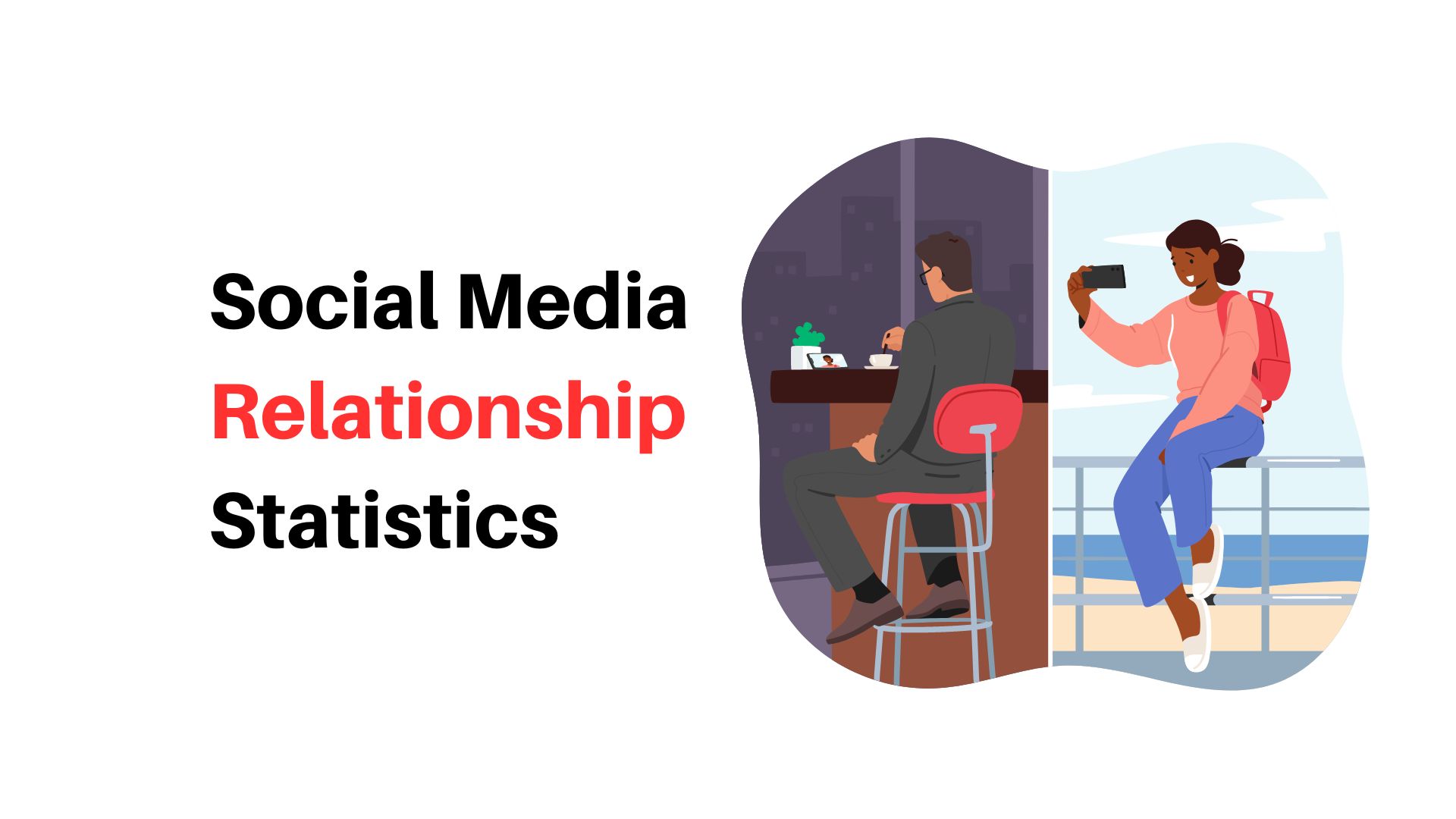Millennial Marketing Statistics
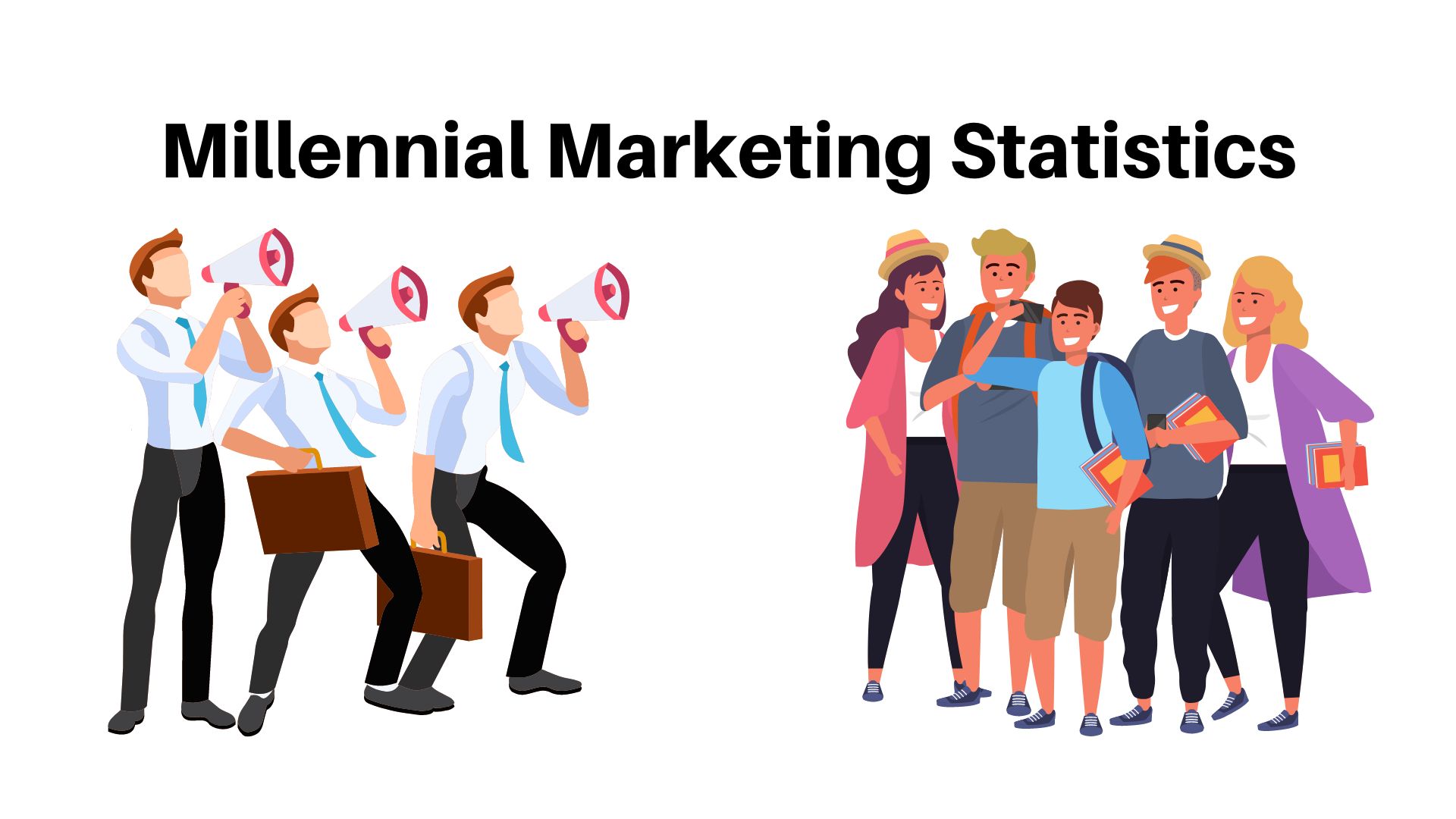
Page Contents [hide]
- Introduction
- Millennial Marketing Statistics (Editor’s Choice)
- What Is Millennial Marketing?
- Strategies of Millennial Marketing
- General Millennial Marketing Statistics
- General Millennial Purchasing Habits Statistics
- Millennials’ Consumer Behavior Statistics
- Millennials and Social Media Statistics
- Millennials Tech. Statistics
- Millennial Spending Statistics
- Conclusion
Introduction
Millennial marketing statistics: Millennial marketing is based on the demographic’s segmentation of the people. People from Gen X and Gen Z have totally different tastes in each and every factor in the market. Therefore, companies need to formulate strategies according to the age group. In these millennial marketing statistics, we will understand the concept along with some concepts to understand the strategies to be implemented for the Gen Z population. Moreover, millennial marketing statistics with recent data have been also mentioned. Some charts and graphs are included along with these statistics to gain more insight.
Millennial Marketing Statistics (Editor’s Choice)
- As of 2023, in the United States, the buying power of millennials is valued at $600 billion.
- Around the world. The purchasing power resulted in $1.4 trillion.
- The global workforce of Millennials comprises around 50% share.
- Currently, millennials living with their parents are 15%.
- 84% of the population believe in recommendations from family.
- In the United States of America, around 85.8% of adults use the internet on other electronic devices while watching television.
- 33% of the Gen Z population do not prefer advertisements on their browsers, therefore they use ad blockers.
- 72% of millennials prefer customized advertisements to general ads.
- 51% of the Gen Z population uses social media to pass the time. On the other hand, some millennials are interested in breaking news resulting in 43%. Whereas, 61% of millennials use social media networking sites to communicate with their friends and family.
- 90% of the millennial population have a habit of making sudden purchases without looking at the reviews.
- The maximum percentage who read newspapers is 32% and 20% is allotted for Gen X people and millennials
- 77% of the younger generation believe that the economy has affected their ability to save and spend money.
What Is Millennial Marketing?
Millennial marketing can be referred to as different ways of marketing according to the age group of the people born between 1981 to 1996. These people are currently between the ages of 25 to 40. There could be some additional number of populations who are born between the years 1980 to 2000. They are still called millennials. As seen in the earlier years, the trends in the markets are changing continuously and it depends on the age of the people to determine such trends.
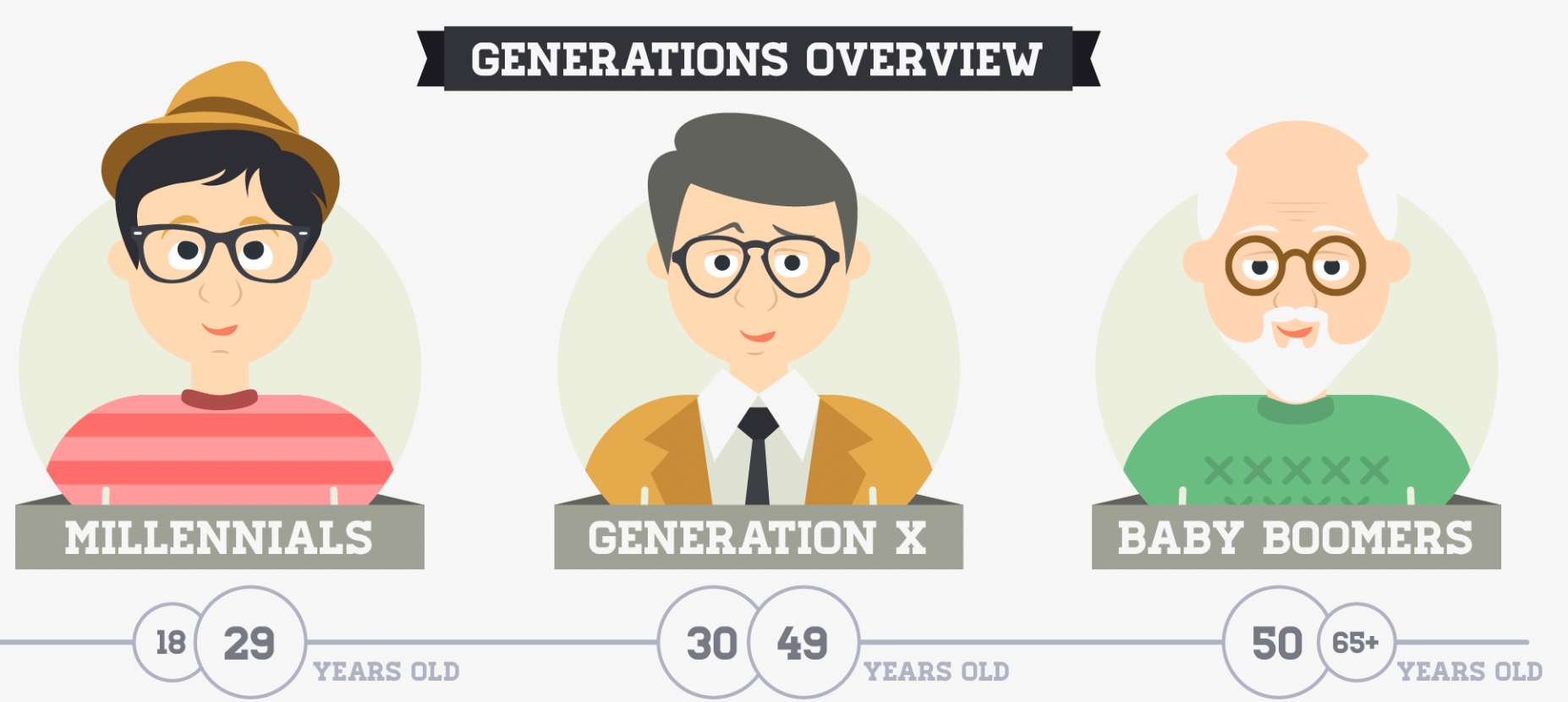
(Source: Appliedpsychologydegree.usc.edu)
The above graphic clarifies the generations more easily by showing that people from the age group of 18 to 29 are called millennials. Whereas people from the age group of 30 to 49 years are referred to as Generation X. And the population the age with and onwards are baby boomers.
Strategies of Millennial Marketing
Today’s generation has been impacted by technological developments. Therefore, the mindset differs from other generations, and marketing strategies affect the decision-making process of the customer in Gen Z. Following are some strategies to understand current generation trends.
- User-generated content engages the most for 84% of millennials.
- Whereas, traditional advertising was not trusted by 84% of Generation Y.
- The best marketing strategy is personalized ads for 70% of millennials.
- On the other hand, video marketing was likely trusted by 70% of customers.
General Millennial Marketing Statistics
The millennial population is the one who is keeping companies competing with each other. Expectations from Gen Y and Gen Z are different, but the Gen Z category has more dynamic trends changing every now and then. Following are some millennial marketing statistics from around the world.
- In the United States of America, around 85.8% of adults use the internet on other electronic devices while watching television. (Source: Review42)
- People who use other devices while watching TV are of age between 26 to 36 years. (Source: Review42)
- Around 97% of millennials have a habit of analyzing the reviews of products or services before purchase, whereas only 87% have faith in such online reviews.(Source: Review42)
- Talking in numbers, 8 people out of 10 do not prefer to make a new purchase before reading online reviews. (Source: Review42)
- 70% of the population in the millennial age group trust recommendations from friends.(Source: Review42)
- Whereas 84% of the population believe in recommendations from family.(Source: Review42)
- The younger generation is influenced 40% by their influencers on social media networks. (Source: Review42)
- Instagram has around 42% of the influencers aged from 18 years to 24 years.(Source: Review42)
- Around 70% of millennials believe in marketing performed by means of YouTube.(Source: Review42)
- In the United States of America, around 89% of millennials are active on social media networking sites every day. (Source: USC)
- Around the world, businesses that have existed on the internet are preferred by 38% of millennials. (Source: 99 Firms)
- Almost everyone in the Gen Z population is using the internet and search engines to find new products. (Source: 99Firms)
- On average millennial users can pay attention to the content for 12 seconds.
- The most preferred visual type is short videos.
- 33% of the Gen Z population do not prefer advertisements on their browsers, therefore they use ad blockers.
General Millennial Purchasing Habits Statistics
- In the United States, around 38% of all homebuyers belong to millennials.
- As of 2023 according to millennial spending statistics, the monthly spending of online purchases resulted in $281.
- Quality is preferred over affordability by 55% of Generation Y buyers.
- According to millennial marketing statistics, mobile payments were used by 39% of Generation Y for making online purchases.
- Environmental-friendly products were preferred by 38% of millennials in 2023.
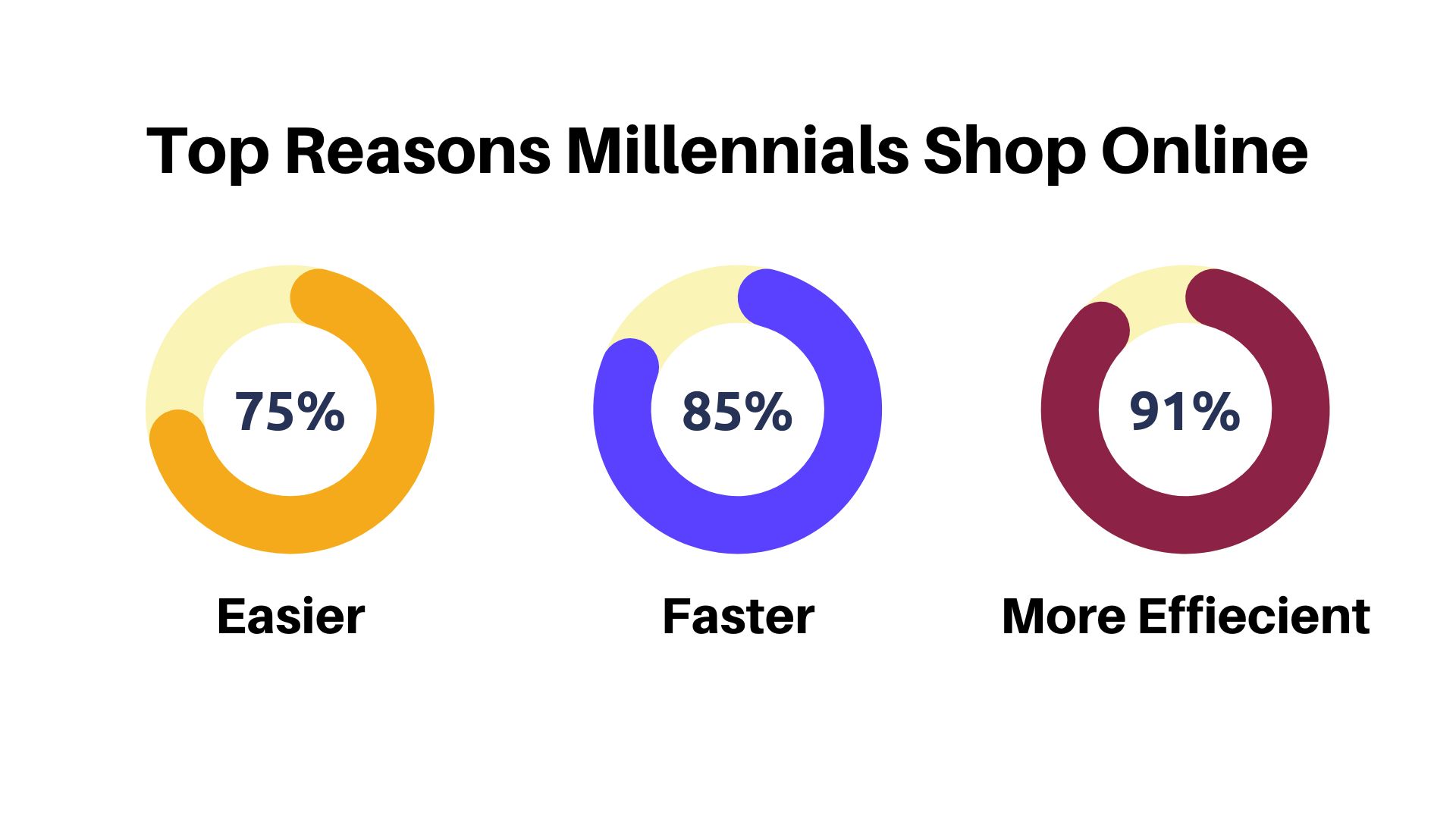
Millennials’ Consumer Behavior Statistics
- In 2023, advertisement is a vital source for every brand which was claimed by 79% of millennials.
- Loyalty programs for favorite brands were preferred by 72% of Generation Y.
- For more than 10 years, 60% of millennials remained loyal to their particular brands.
- Around 57% of millennial women’s purchasing decisions are enhanced by the brand’s value and social proof.
- 35% of men millennials’ average spending is almost $5,000.
- Whereas, 3 star rating of a brand is preferred by 31% of millennials in 2023.
Millennials and Social Media Statistics
- Among millennials Snapchat is the most used social media application followed by TikTok and YouTube at the percentage of 100%, 91%, and 87% respectively. Whereas Instagram has 83% of the population and Twitter and Facebook share the same percentage at 71%.
- As of 2023, active social media users of social media sites are 90.4% of millennials.
- Around 70% of millennials are currently engaged with YouTube and Facebook.
- In the United States, daily Instagram users are almost 54% of older millennials.
- Advertisement products on social media platforms for gifts are preferred by 44% of American millennials.
- 72% of millennials prefer customized advertisements to general ads
- Around the world, 70% of millennials trust those brands that make videos of the products.
- According to the studies, 51% of the Gen Z population uses social media to pass the time.
- On the other hand, some millennials are interested in breaking news resulting in 43%.
- Whereas 61% of millennials use social media networking sites to communicate with their friends and family.
- Trends are spread through social media sites, and around 47% of the Gen Z population use it to get informed about it
- 68% of the millennials believe in a seamless and integrated platform on the internet
- 90% of the millennial population have a habit of making sudden purchases without looking at the reviews
- 42% of millennials own houses by the age of 30. Whereas Gen X people result in the same at 48%.
- 86% of millennials spend their holiday gifts more than estimated.
Millennials Tech. Statistics
- According to Millennial Statistics 2023, virtual reality was used by every one-third of millennials at once in their lifetime.
- Technology has positively impacted the work-life balance of 73% of millennials.
- Tablets are preferred by every generation but at a different level. The studies that, the tablet is used by millennials 50%.
- Laptops or PCs are the most used equipment around the world for work and study purposes. Gen X and millennials are using it at 81% and 78% calculated for each generation.
- Smartphones being the most common and handy electronic device are being used by 85% of the millennials.
- On the other hand, when it comes to magazine reading and newspaper, in the United States of America magazine is preferred by 31% of the millennials. Whereas 35% of the Gen X population and 33% of the baby boomers are reading it.
- Newspapers are also a part of the reading material but in an offline mode (without any electronic devices). The maximum percentage who read newspapers is baby boomers resulting in 48%. 32% and 20% are allotted for Gen X people and millennials.
Millennial Spending Statistics
- In the United States, there are 72 million millennials are currently available in 2023.
- In North America, stock investment has risen among 36% of millennials. In which the buying power of millennials is segmented into high (29%), medium (33%), and low (33%).
- The overspending remained higher on holiday gifts by 86% of millennials.
- Impulsive purchasing was done by 64% of millennials.
- The largest share of homebuyers is done by millennials (38%).
- The spending on food was preferred by 49% of millennials over saving money for the future.
Using social media following graphic explains the usage by generations
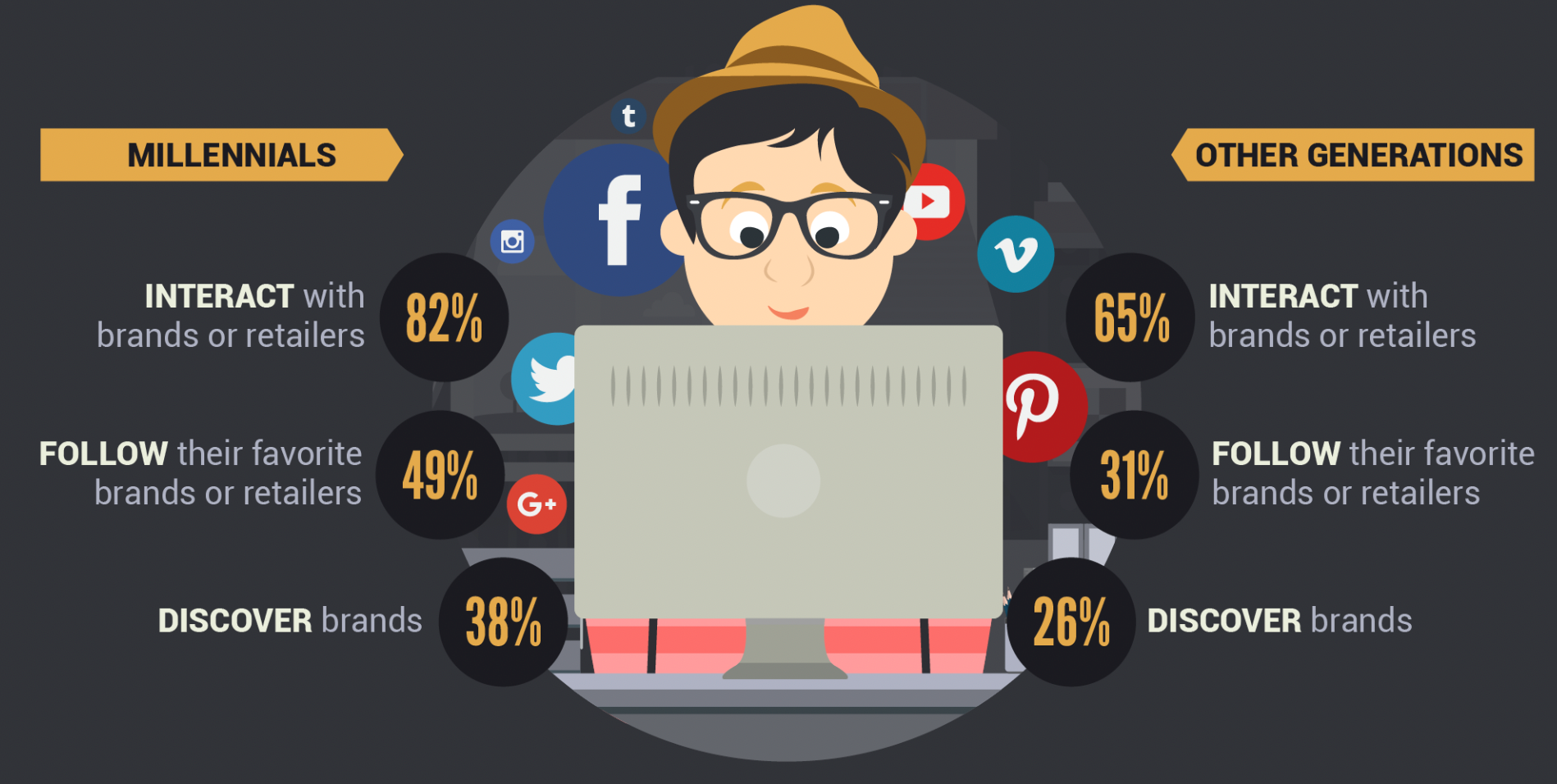
(Source: appliedpsychologydegree.usc.edu)
- 80% of the millennial population believe that advertisements are necessary for brand awareness.
- 58% of the population from Gen Z watch advertisements to support their influencers.
- Whereas 46% of the millennials don’t have any say about ads.
- Around 44% of millennials prefer promoting the products in return for monetary benefits.
- 47% of the Gen Z population believe social media networks lead them to shopping sites.
- Around 57% of the younger generation compare prices of the product or services online vs offline before making any purchase decision.
- 77% of the younger generation believe that the economy has affected their ability to save and spend money.
- In the United States of America, around 77% of people connect with brands using social media networking sites.
- Around 15% of millennials believe that owning a car is their first priority. On the other hand, 25% look at it as a need but not a priority.
- In the United States of America, around 91% of millennials prefer brands that have been connected to some cause.
- Considering spending habits, baby boomers have a habit of spending money on health care services, reading materials, and personal care products.
- Generation X spends their income on pensions, entertainment, holidays, and insurance.
- On the other hand, millennials have a wide range of tastes to spend their income on education, transportation, entertainment, vacations, shopping and drinking, and eating habits.
- The group of millennials in the United States of America is reported to be spending $600 billion per year on various things.
- The purchasing power of millennials around the world is reported at $1.4 trillion.
- Around 60% of millennials tend to increase their loyalty toward a brand if they are satisfied with their services.
- Around 34% of the population in all generations shifted their purchasing preferences to online after the pandemic period.
- Around 60% of the millennials stated that they have been purchasing products or services from the same brand over the last 10 or more years.
- In the United States of America, around 54% of baby boomers use Instagram to manage their social life.
- The younger generation is believed to open a message from any brand within 90 seconds of its delivery but might not reply immediately or do not care to reply at all.
Conclusion
As seen above in the Millennial marketing statistics even though countries are different, the behavior of the Gen Z people i.e. millennial population is almost the same. In this regard, companies are required to make strong millennial marketing strategies to attract old and younger generations. Moreover, today’s generation is crazy about technology. Whatever they need, they will instantly search on the internet, and then if no results are found they will refer to any other person. Therefore, it is beneficial when companies involve technological functions in their marketing activities. Considering the minds of the millennials This millennial generation is the future of companies. Thus, even though it is difficult to persuade these minds, is it crucial to understand the markets and their trends.
Sources
FAQ.
Millennial marketing is not difficult to perform but it needs different strategies to fit the pieces into the puzzle.
Actually, today’s generation is only interested in factors which are supported by the technology. For millennials technology is everything. Therefore, to keep the customer satisfied in the Gen Z it is necessary to maximize the use of technology such as social media networking.
In simple words, following the current trend and listening to the needs of the Gen Z population can make millennial marketing effective.
No. But majority of the new generation is using social media. Therefore, to make strategies more effective using such communication channels which are more effective is important.

Barry is a lover of everything technology. Figuring out how the software works and creating content to shed more light on the value it offers users is his favorite pastime. When not evaluating apps or programs, he's busy trying out new healthy recipes, doing yoga, meditating, or taking nature walks with his little one.


